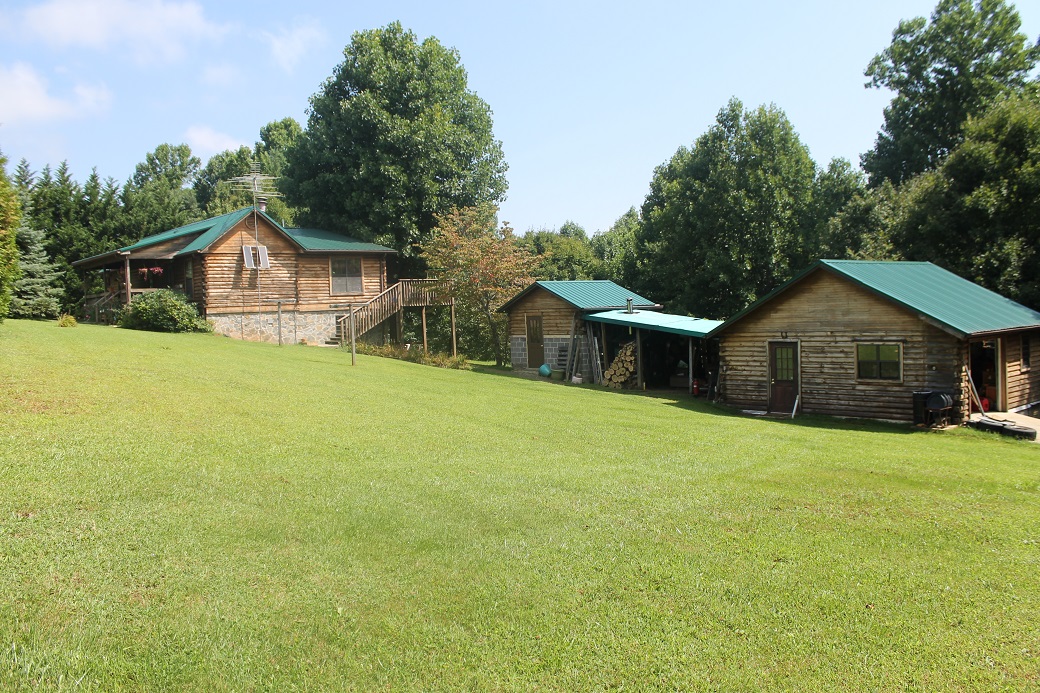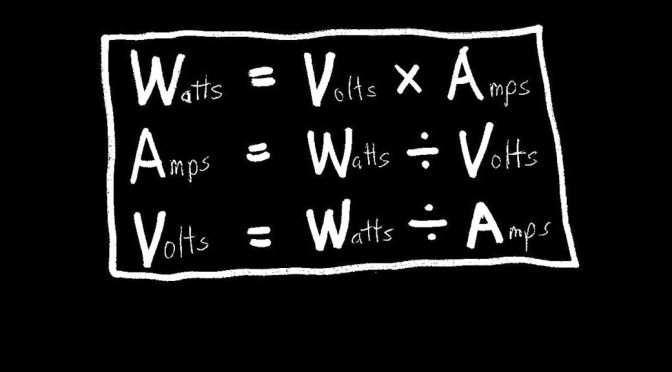It seems a bit backwards that we Cogs have spent this cold, snowy week immersed in learning about the pros and cons of solar energy. Too windy to cut wood and too wet and slippery to be outside except for chores, Cog began tackling the tricky issue of using a solar powered system as a backup power supply for our well. The devil is in the details he carefully explained. “Amps times volts equals watts.”
Gently teasing me about my status as a former urban princess, meaning one who expects to have things work at the flip of a switch and to pay someone to fix it when it breaks, Cog pointed out I came into this homesteading experience with little to no technical understanding of household systems. Electrical, plumbing and structural concepts were for the specialists, not homeowners who don’t even know that ‘amps times volts equals watts’.
Having relocated to our mountain in order to live a more self-sufficient lifestyle, it has not been lost on me that relying upon ourselves means becoming a generalist who can evaluate, design, build, and maintain many systems at a basic proficiency level. The learning curve has been steep and often comical as I have tackled becoming a gardener, cook, and herbalist. But these tasks have paled in comparison to the knowledge Cog teaches me about the modification and upkeep of our home. It has been particularly difficult for me to remember that amps times volts equal watts.
Why can’t I remember that? Amps are carefully considered when calculating the electrical surge needed to start an electric motor, a brief and sometimes very powerful draw of energy. Volts are kept in mind when powering the typical household device or appliance we use. We plug regular things into a 120 Volt outlet. The dryer, stove and well pump are each on a 240 Volt line, thus the funny plug on the appliance and the big clunky outlet it gets plugged into. I thought I finally understood it all since I had now scribbled it on a sticky: amps times volts equals watts.
So we simply needed to set up a solar collection system with enough watts to meet our goal, which in this case was to run the well pump. Although our well is shallower than others on the mountain it is still quite deep, nearly 250 feet down. Hand or simple electric suction pumps do not work at that depth. So during a long term power outage, when our backup generator runs out of propane it would be wonderful to switch the well pump to solar energy for a sustainable water source. Easy-peasy because amps times volts equals watts.

As I asked more questions Cog vacillated between feelings of frustration and laughing out loud at my Star Trek impression of “Make it so Number One.” It seems that in my enthusiasm to find a quick and easy solution I managed to oversimplify the whole matter in much the same way people who are used to writing a check to pay the contractor often do when they don’t want their heads filled with details, but just want the damn thing to work. Still in the mindset I learned in Consumerism 101, Cog offered up “it’s not just about the watts honey.” No, it is! That’s what it says on my sticky: amps times volts equals watts!
It was during the back and forth with Cog as I continued my solar education that my talents as an expert word-maker-upper came into play. I discovered that the technical jargon could be altered to better describe the process or function, something which still makes us both laugh each time it is used. In this way we can smile over what was previously a dry and serious matter. In fact, the new lingo came about as Cog was showing me that while amps are all equal, some amps are more equal than others.
To illustrate the problem Cog outlined this issue of amps as I grabbed a legal pad and began scribbling notes. The sun shines on the solar panels where energy is collected and funneled into batteries via a charge controller. The tricky part comes in converting that stored battery power to run a household electrical device. For that you need an inverter. Solar inverters are very touchy as to ‘watt’ quantity of amps you need to draw.
The motor in our well pump needs a swift kick of amps to get it started, a temporary surge if you will. Cog explained to me this electrical kick is called an “in rush” and he bought a pricey meter to not only measure the current in a wire from the outside, but to measure the surge to start the pump. He was so funny, almost excited when the UPS guy brought his new toy. With this we would discover ‘which’ amps times volts equals watts.
As we tackled the measuring of the surge with Cog’s new “in rush meter thingy” we turned on various faucets to force the well pump to kick in. Move over Doc Brown because our well pump’s “in rush” of amps might as well have been 1.21 giga-watts after watching Cog’s reaction. For approximately 2/10ths of a second the pump required 57.5 amps to start the motor. Doing the math, 57.5 amps times 240 volts equals 13,800 watts. We’re gonna need a bigger flux capacitor.
Typical quality (and pricey) inverters provide around 4 to 5,000 watts of continuous power with maybe a 8 to 10,000 watt ‘surge’ capacity. So a quality inverter that could handle our well pump would be a seriously expensive upgrade. Thank goodness Cog is stubborn and continued making phone calls as he searched for answers to our new dilemma. He discovered a gadget called a “soft start” controller which basically stretched out the time of the initial energy surge required to start the motor, thereby reducing the amps needed all at once. I dubbed this the “in rush slower-downer.” Perhaps with this device we would need less amps times volts to equal fewer watts?
But alas, a subsequent conversation with an expert at the manufacturer of our well pump confirmed the well pump motor would not last long with the in rush slower-downer, aka the soft start controller, in place. The electronics and capacitors inside the ‘standard’ well pump motor requires a massive jolt of amps to turn the motor over and overcome the water pressure already in the pipe running to the surface and onward to the house. Essentially it would quickly burn out the motor. With the solar collection system we were considering, sometimes there just aren’t enough amps <sigh>.
Cog did discover that the same company who manufacturers our well pump also offers deep well pump systems already set up for solar with a type of soft start device designed in. Unfortunately, the cost is on par with the flux capacitor inverter we would need for the 13,800 watt surge in our initial design. Watt to do, watt to do?
So, for the immediate future our backup water supply remains a clear babbling creek, inconveniently located several hundred feet down a steep and uneven logging road at the foot of our property on the edge of the mountain. While this actually helps comfort me in my process of emotional bargaining, consoling myself that we have alternatives in place should we need to actually become sustainably self-sufficient for a long period of time, we need to find a way to get our water to the top of our mountain. For now, the power to do that remains locked in the simple formula: amps times volts equals watts.



It’s not easy to be “Green”! The title of a popular British TV series with Dick Strawbridge. Dick & James Strawbridge wrote a very book “Practical Self Sufficiency” with lots of tips&tricks for sustainable living. Unfortunately this book doesn’t solve your “Modern-days luxury high power consumption device” problem :-(
As for Mr. Cog I would like to recommend two books;
First from Victron “Energy unlimited”, all you need to know about (solar) batteries, free download PDF. http://www.victronenergy.dk/upload/documents/Book-Energy-Unlimited-EN.pdf and if you like to know all about electronics (certainly NOT a easy pick-nick read; 1000 pages cramped with info); Practical Electronics for Inverters, third edition. Unfortunately, this book doesn’t solve the Modern-days luxury high power consumption device” problem either ;-)
Currently, our 2 person household, consumption hoovers around 1000 kWh / year. About 500 kWh comes from 1kWp solar power, the remaining 500 kWh comes out of the grid. Next year I hope to reduce the grid part using a 24V deep cycle battery pack and a Victron MultiPlus 24/3000/70-16.
1000 kWh / year! I am most impressed. Cog says we hover around that in a month here, depending upon the season. I am just learning about power consumption and being aware of what is wasted and then what is unnecessary. I always thought it was about reducing the power bill. It never occurred to me to consider what electricity might be available to use. It is one heck of a learning curve.
Thank you for the links, we will check them out. :-)
Not many apparatus are really off if you switch them “off”. An average wall-adapters consumes about 25 mA (milli-Amps) at 230Volt (Europe grid voltage) = 0.025 * 230 = 5.75 Watt. On a yearly basis, this is 5.75 * 24hrs * 365 = 50 kWh…….per wall-adapter. How many are in your home?? These are called vampire-losses.
Our washing machine, switched off, but just with the plug in the wall; 65 kWh/year, Dishwasher completely “off”; 50kWh/year, light dimmers are not off if you switch the light off, computers/TV/stereo etc, etc. Best is to buy a digital power/Energy-meter for example and check every electrical item in your house for consumption when switch “off”. If you switch them really off, i.e. pull the plug or switch them off at the wall-switch (if you have?); a 30% saving on your yearly electricity consumption is very quickly and easily achieved. As for light lamps; Fluorescent compacts are pretty good, considering their consumption/cost. Be a bit carefully with LED-lighting. Their light-spectrum is very narrow (550-650 nano-meter, no Ultra-violet nor Infra-reds) and therefor may have health concerns. For more info; google “health LED’s. Suc6 with your “vampire”-hunt :-)
Oohhh yes, a different consumption mind-set is needed…………minor detail ;-)
The wondering elf said,
“Oohhh yes, a different consumption mind-set is needed…………minor detail ;-)”
For some years now I would follow Mrs Cog and child unit around shutting off lights etc. While Mrs. Cog and daughter were very sincere in their declarations they would be more careful in the future about ‘wasted’ electricity, their behavior did not markedly change because they didn’t possess the mindset to do so. It isn’t a matter of right or wrong or even about judging them as negligent people. It is about education and fully understanding, then living, what they have learned. Or as you said, the mindset.
There is no meter on each device clicking off pennies or watts. The light is so little, how could it be using much power? The bill comes in each month and we have budgeted cash to pay it. So…..what’s the big deal?
It was only when Mrs. Cog was coming up to speed about power consumption for various devices and appliances, solar panels, inverters and the expense of all that equipment did Mrs. Cog begin to embody exactly what I had been talking about all those years. It was a cognitive and visceral breakthrough for Mrs. Cog and I have noticed she is more receptive to other things since then.
Regarding electricity vampires, I remember reading a few years back that electricity consumption in the USA is around 15% higher than it would be if all these vampires were killed with a silver bullet. That’s a lot of power plants, particularly older base-load coal plants, that could be shut down.
Cognitive Dissonance
I really enjoyed this story because my husband and I have the same problem, trying to go solar with a deep water well, but not having deep pockets.
We too have a water source on our property, a spring fed pond, downhill about 200 feet. Shortly after leaving the city for the simple life (funny) on our own homestead, and before we had purchased a generator, we experienced two back to back ice storms which brought down the power for three weeks. The temps. during that time never left the twenties so the pond iced so thick it was useless. My husband had just returned from the hospital when the first ice storm hit, having broken his pelvis from a fall off a horse, with instructions of no weight bearing for 6 weeks. We had 12 horses to water, 6 dogs, and ourselves. Using golf shoes with metal spikes, the only way to walk outside on the ice, I would chip ice off any surface I could find, put the ice in buckets, and thaw them out by our wood stove. Twelve 5 gallon buckets a day just for the horses.
I kid you not, it was one of my best experiences. It showed me what I was capable of facing. That was almost two decades ago and we’ve never regretted all the many learning experiences that have come from living on our own little mountain top in the Ozarks.
The genesis of this story began with a question I posed to Mrs. Cog, one of those uncomfortable “What if” questions we all like to avoid if we can.
“Honey, what if I am severely hurt and unable to walk/work and we lose power long enough where our electricity backups (propane powered whole house standby and gasoline powered portable generators) are exhausted? How we will get water?”
Mrs. Cog cheerfully replied that she would simply walk down 200 feet of elevation to the creek and haul back some water when needed, everyday, for as long as it was needed.
Right!!!!
I have no doubt Mrs. Cog would do exactly as she described. And I have no doubt she would suffer terribly while doing so. It is one thing to walk down and back up from the creek, another thing entirely carrying 16.4 lbs of water (2 gals). There had to be another way. So I began looking.
Ultimately the backup to the backup to the water supply must be lower tech than the original method or the first backup. We are close to a solution and I will write an article about it when (and if) we implement it.
Thanks for the story. We almost always grow from great adversity……….if we don’t die from it. :-)
Cognitive Dissonance
I’m looking forward to your low tech solution. Our current low tech is a narrow well bucket.
We are still researching, though the field has narrowed. Please understand that low tech doesn’t necessarily mean low expense. I want a ‘solution’ that might not be used for years other than to exercise it, then be used for months or even years. So the ‘solution’ must be well engineered and made of high quality materials. I am not going to mention anything until I have selected and installed the device and that might be a month away.
Are you looking to do something within the next 30-60 days? Do you have specs on your present well including well casing diameter, depth of submersible pump and the level where the actual water is, the so called ‘static’ water level? What is your budget? Meaning what are you willing to spend comfortably and what would you wish you spent after you realize your life depends upon the ‘solution?
Contact me directly or use the link below if you wish to discuss this off line. I don’t want to talk in public about the preliminary information I have until I have checked it all out.
https://twoicefloes.com/contact-cog/
Cognitive Dissonance
I was not going to enter into this discussion but feel another view might be good. Especially after reading @Packleader’s water experience in icy conditions.
Here in PI we have no running water at my house. I will not get into the whys of that condition as there are several. We pump and carry water by hand everyday. As do almost all Filipinos in the entire country.
I know the entire idea makes most Americans, or Westerners from developed countries cringe. But after getting used to it I would never live anywhere without this solution as part of the normal water supply situation.
We live about 75 yards from the beach, which has its own special sweet water well issues. Our drinking water well is only 20 feet deep, the minimum for required filtration and sanitation. Deeper wells here get into brackish water. The really great wells have to go down hundreds of feet when one is so close to the ocean.
But regardless of the well depth condition I would require a hand pump well, either surface mount or submersible depending of static water depth. And the reality is most hand pump wells can be dug to a much more shallow depth than is needed by a mechanical pump. The static water level recovery is so much quicker with a hand pump. But I would always want a hand pump on my place even if the well had to be 220 feet deep. The simplicity and long lasting qualities make it a safety back up I always want to have regardless of what other water supply systems I might have in place.
Personally I compare the health benefits of pumping and carrying 100 gallons of water a day, less than one hour’s worth of effort, to time spent in the gym. And nothing engenders a sense of water conservation and minimal use like having to pump and carry it yourself everyday.